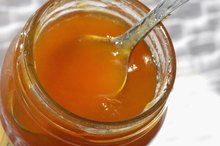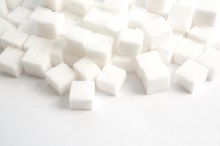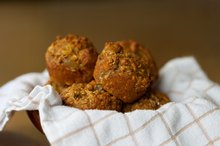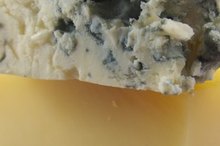The Definition of Crude Fiber in Food
Fiber refers to the indigestible carbohydrate component that is present in plants. The name is derived from the fact that it has a naturally fibrous structure. Its primary purpose in plants is to form part of the structure in the cells, but it is also useful for the human diet. Crude fiber is a little-used distinction to differentiate the types of fiber 1.
Function
In the intestinal tract, fiber resists being broken down by enzymes, although part of it may be metabolized by bacteria in the lower gut. Fiber is characterized by low or no nutritional value, but because of its effect on the digestive system, it is thought to help with such problems as diabetes and high levels of blood cholesterol.
Identification
Pectin Vs. Agar
Learn More
Different types of plants — including cellulose, gum and lignin — have varying amounts and kinds of fiber. Pectin and gum, for example, are water-soluble fiber found inside the plant cells of beans, oat bran, fruits and vegetables. They slow the passage of food through the intestines. Insoluble fiber is found in the cell walls of cellulose and lignin. It increases bulk in the diet and speeds up the passage of food through the digestive tract. Wheat bran, whole grains, vegetables and beans are all good sources of insoluble fiber.
- Different types of plants — including cellulose, gum and lignin — have varying amounts and kinds of fiber.
- Pectin and gum, for example, are water-soluble fiber found inside the plant cells of beans, oat bran, fruits and vegetables.
Crude Fiber
Dietary fiber is a complex mixture of different components; it may or may not include the fibrous structure. Crude fiber, on the other hand, is a term used to describe the fibrous food residue that is left over after it has been dissolved in the laboratory with certain harsh chemical solvents such as sulfuric acid and sodium hydroxide 1.
Considerations
Sign & Symptoms of a Colon Mass
Learn More
The compounds removed by the treatment of harsh chemicals predominantly include protein, sugar, starch, lipids and portions of the structural carbohydrates that are part of the organic construct of the plant cells. Some of the other structural carbohydrates such as cellulose and hemicellulose remain behind as the residue that resists digestion in the human body.
Amount
According to experts from Colorado State University, crude fiber only equals about one seventh to one half of total dietary fiber, depending upon the source of the fiber 1. Some manufacturers will list both types of fiber on the packaging so that consumers can easily evaluate the difference.
Related Articles
References
- Food Science: Crude Fiber
- "Dietary Reference Intakes for Energy, Carbohydrate, Fiber, Fat, Fatty Acids, Cholesterol, Protein, and Amino Acids." Institute of Medicine of the National Academies. September 05, 2002.
- Gropper SS, Smith JL, Groff JL. "Advanced Nutrition and Human Metabolism." Sixth Edition. Belmont, CA. Wadsworth Publishing Co., 2013.







